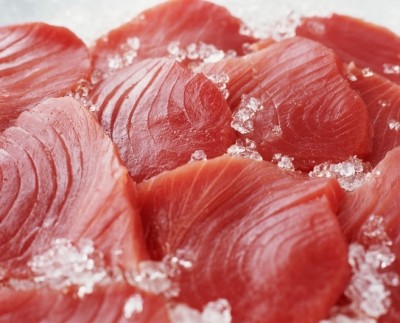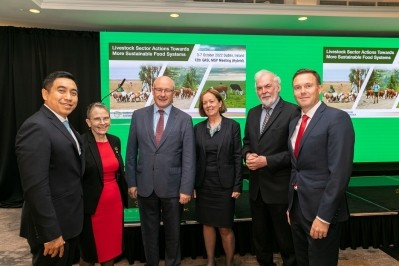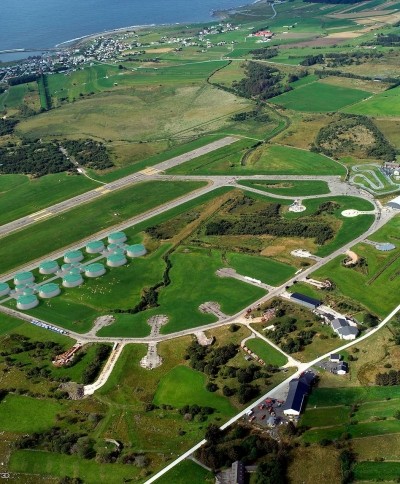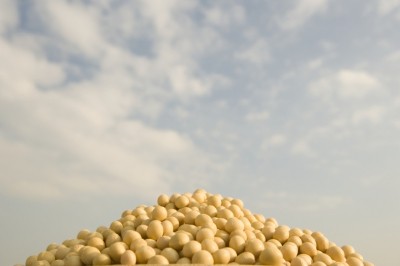Is the global food system broken, and, if so, will a push towards plant-based diets fix it?
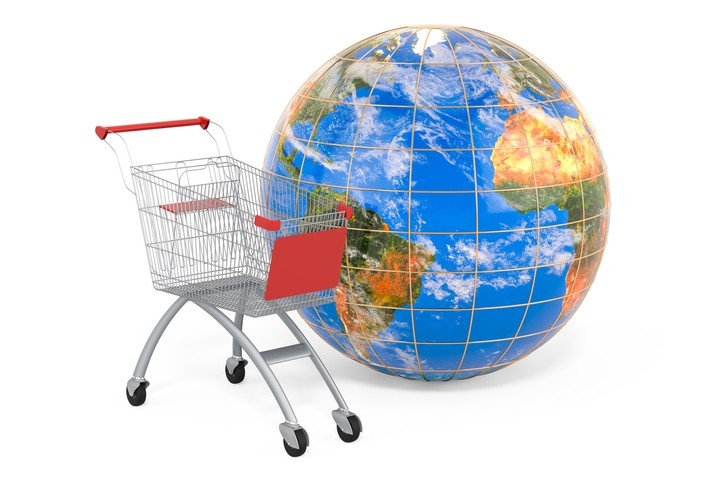
While meat alternatives have risen in popularity, questions still remain around their sustainability and if they can actually make a substantive difference to the food supply chain.
Michael Lavin, founder and managing partner of Chicago based, Germin8 Ventures, a purpose-driven VC firm that invests in companies fixing the global food system, shared his thoughts with us on the future of food production, with a particular focus on the rise of the plant-based foods and cultured meat sectors in the US.
“We see that 2020 and 2021, so far, are the breakout years on the plant-based food formulation side. Plant-based companies have reached a certain stage of maturity; we have seen the IPOs of Beyond Meat and the rumored IPO of Impossible Foods and Oatly’s [blockbuster] IPO as well. Those companies have got traction, they are selling products to customers in all sorts of different channels. They are taking a meaningful share of the conventional products market share. It is still kind of fractional but there is a lot of potential.
“However, we feel that the cultivated meat companies, while there is a lot of promise there and we like the thesis and the ideas, it kind of feels like biofuels 2.0, it seems like an area that is attracting a lot of herd mentality, a lot of funding dollars but has a very difficult scale-up path and a very challenging economic cost curve to come down. We don’t think it is a worthy space, at least for early stage investors. Our observation has also been that a lot of these companies have not even done the rigorous consumer studies and testing to see how they would position their products to consumers; they would seem to be more focused on how to position their products and companies to investors and the media,” commented Lavin.
But he does see cellular seafood as having the edge over cultivated meat.
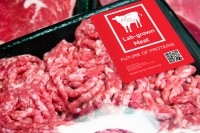
The challenge is that companies like Memphis Meats, Mosa Meat, and others are trying to replace conventional meat products that are available in abundance and at low cost, and are also what consumers want and like to eat, he said:
“Where cell-based meat is hard to produce, to scale up, and is very expensive, some of the cultivated seafood companies are actually addressing interesting opportunities such as the blue-fin tuna market, for example. Blue-fin tuna is effectively an endangered species, and there is a ton of demand that is untapped for that market. There is just not enough supply to meet that demand. Blue-fin tuna is also a really expensive form of protein, drawing comparisons with wagyu beef, so we see that as a demand expansion opportunity.”
Germin8 Ventures is actively investing in foodtech and agtech. It is primarily motivated by technology that is environmentally sustainable but also technology that supports farmers, that can give growers the opportunity to participate in the future economics of food production, commented Lavin.
“One company that we have invested in, which we can’t name yet, is one that is going to compete against all of the players I just mentioned. It is going to start with dairy proteins but its platform is applicable for egg proteins and other protein types as well, meat analogues too. What it is doing is genetically engineering commercial crops to produce the animal proteins of interest. In this way, it provides a value proposition to the farmers who can effectively go from being a commodity soy grower, for example, to being a specialty crop grower overnight. And the scale up is linear.”
How much of a threat do plant-based alternatives pose to the industrial meat and feed complex in the years to come?
“I think they will be a threat to those companies that chose not to innovate, that try to protect their domains.
“But I think it is important to remember that these are all protein companies, you might have a conventional meat producer that is predominantly manufacturing animal-based proteins today but at some point it may have a plant that is filled with bioreactors instead of meat grinders. It is ultimately about the future of protein; companies will have to adapt and stay relevant and drive that future forward.”
Farmers will see demand from different end markets and may shift away from a monoculture dominant approach to crop cultivation, said Lavin.
In that respect, he cited ZeaKal, a San-Diego based biotech that tweaks genetic crop traits to improve their rates of photosynthesis, as one to watch; it recently reported data showing its PhotoSeed technology can improve the oil, protein, and sustainability profile of soybeans.
“ZeaKal is a startup with really interesting science. It can enhance the nutritional profile of soybeans but without the drag on yield and that is something which is needed in the feed markets, this technology could benefit a market like aquaculture, a farming sector that is going to have to outsize conventional fishing, certainly by 2050 in order to meet demand and create a sustainable food system.”
In terms of feed innovation along the lines of the emerging alternatives to soybean meal (SBM) and fishmeal such as single cell proteins, insect meal and oil, and algae derived ingredients, he said: “We have seen some off-take agreements between some of those emerging players and customers but these companies are predominantly at pilot scale and some of those off-take agreements say these companies must first show they can price below a certain threshold, benchmarking against the cost of fishmeal. SBM, which has been replacing fishmeal for many years, is way undercutting that threshold. [To sum up] these novel protein companies, while they are interesting, are going to have to prove their products have the right nutritional profiles for animals, and production will have to be a price point that enhances feed conversion and the bottom line for the producer.”
The aquaculture sector is possibly the best end market for insect proteins and oils, he added.
In terms of fixing the global food system, Lavin argues that more biodiversity is needed in our diets in general. “People globally get about 90% of their calories from a really limited range of plant and animal species, and that is absurd considering there are many thousands of edible plants and animals that we could be consuming. That lends itself to thinking we should broaden our horizons, integrate more plants into our diets and reduce our red meat consumption.”
UN food summit
Later this year, the UN is set to hold its historic Food Systems Summit – the goal: urgent action to disrupt business-as-usual practices in the food system.

“It is a critical time, we have a decade of action left to achieve the 17 sustainable development goals (SDGs) and without a significant transformation of food and farming, many of those SDGs will simply be unobtainable,” Philip Lymbery, CEO of Compassion in World Farming International, told this publication.
He has been appointed a UN Food Systems Champion to represent animal welfare organizations in Europe and beyond at the summit.
“I think there is a genuine greater receptiveness to the idea of moving towards a more sustainable food system, a more sustainable society. COVID-19 has shown us just how fragile modern-day society is. Almost overnight, things we take for granted – our freedoms, our health and our way of life - can be snatched away. The pandemic is but one emergency that is bearing down like a ton of bricks on humanity globally, the others being the climate and nature emergencies. We know that, all around us, our finely tuned life support system – nature – has gone into rapid decline. What this is showing us is that our current way of life is unsustainable and if we do not want it to see it snatched away from us wholesale and permanently, we had better do something about it and do so quickly,” remarked Lymbery.
Agriculture, he continued, now covers half of the habitable land surface of the planet and continues to expand into the remaining wildlands, shaking free viruses that we otherwise might not have come into contact with and that presents a pandemic breeding ground.
As an animal welfare advocate, he also questions the future of industrial animal agriculture.
“We need to question our continued reliance on factory farming, keeping animals in a hothouse, this can trigger the emergence of newer and more deadly strains of viruses.
"Is it a possibility that a pandemic could emerge as a result of intensive animal agriculture? Well, it already has. Over ten years ago, swine flu emerged in intensive pig units in the Americas and went on to affect nearly the entire world. [The US CDC estimated that 151,700-575,400 people worldwide died from infection with that virus in the first year of its circulation].
“So with ongoing intensive animal agriculture as well as our continuing encroachment into the last remaining wildlands of the globe, we could be facing a situation where the next pandemic could be caused by what we put on our plate.”
So what should a transformation of a global food system look like to organizations such as Compassion in World Farming?
“I very much see the need to move away from industrial agriculture towards a regenerative and agroecological food system, swapping cages and crates, artificial fertilizers and chemical pesticides for a much more harmonious, nature and welfare friendly system where animals are restored to the land as rotational, grazing or foraging creatures. This is the way I see production going.
“However, the UN summit in July is very much about tackling the system in its entirety, it is not just about reforming the way we farm, it is also about reforming what we eat and everything in between. So on the consumption side, I think the big issue to tackle is the dominance of livestock products in our diets globally. Whilst there are more vegetarians and vegans now, certainly in the western world, the statistics are showing that people per capita globally are eating more meat than ever before. So reigning back on resource intensive animal products, particularly those produced through industrial farming, is a big part of the food system transformation that we need.
“So, in summary, it is moving away from factory farming and heavy meat diets to a food system based around regenerative and agroecological production, and rebalancing diets, globally, with less meat and dairy, particularly from factory farms.”
Plant based meat alternatives, cellular meat and the use of precision fermentation are very welcome developments, he added.
Reducing red meat consumption ‘is not the answer’
In 2019, an EAT-Lancet Commission study argued that people in Europe and North America should reduce red meat consumption by about 80%.
Alice Stanton, professor in cardiovascular pharmacology at the Royal College of Surgeons in Ireland, and director of human health at Devenish Nutrition, however, believes red meat is necessary for a sustainable food future.
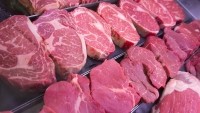
Stanton said she “totally agreed” with the EAT-Lancet study’s proposal for people to eat more pulses, nuts, fruits and vegetables.
“I’m not against vegetarianism or veganism,” she told the Observer last year ahead of a speech at the Oxford Farming Conference. “It is possible to have a balanced diet with vegetarianism. It’s a little bit more challenging but still possible with veganism. However, it requires a lot of knowledge and effort, which doesn’t happen in the majority of the population. People don’t have time to invest in getting a really balanced diet through a range of plant-based foods.”
“Absolutely, we need to address greenhouse gas emissions. But I’m concerned about the dramatic reduction in red meat consumption being regarded as the solution,” she said. Eating red meat in moderation – “twice to four times a week” – was “protective against heart attacks, strokes and cancer”, while nutrients in red meat were vital for children in the first three years of life, she added.
Prof Stanton also told the Irish Examiner she had concerns about the impact the loss of livestock farming could have on soil health and its ability to produce food.
“I am optimistic that there are technological solutions which can reduce emissions from livestock and increase the crucial embedding of carbon in soils, grassland and forestry.”
